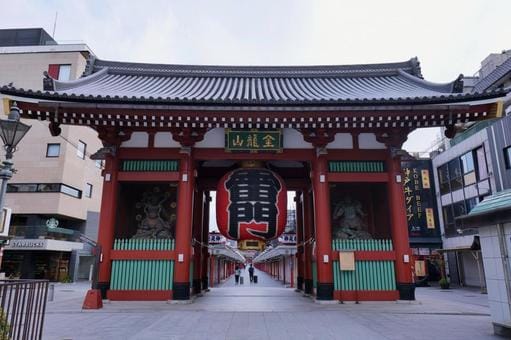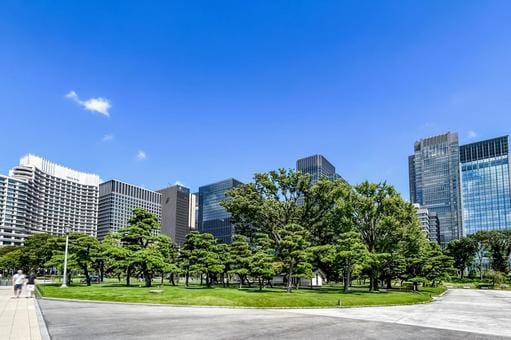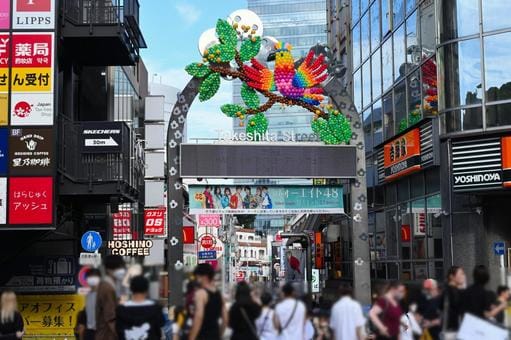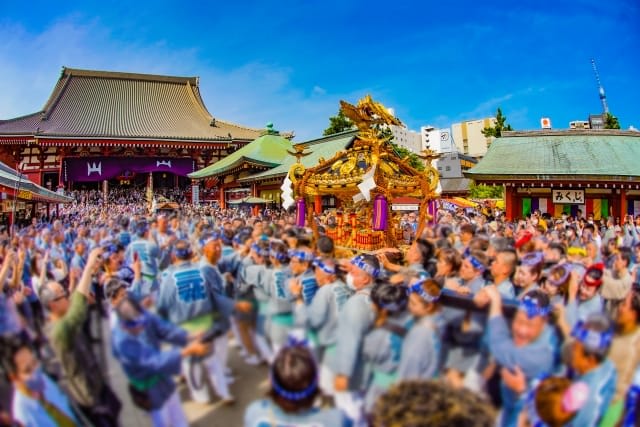Tokyo Attraction Guide 2026: Must-Visit Spots for International Tourists w/map
This time I wrote an article about Tokyo, a city I was born and raised. And I updated this article in January 2026 to incorporate my findings from this research, along with the latest information for 2026.
Another reason for updating the article is the growing interest in tours that allow visitors to safely and deeply experience Tokyo. Because Tokyo is a city that continues to develop at a dizzying pace and in complex ways, tourists visiting for the first time find it extremely difficult to discover the truly excellent spots beloved by locals.
This is why food tours led by knowledgeable local guides who know Tokyo inside and out have been gaining popularity, as they take visitors through Tokyo's maze of establishments.
In fact, Magical Trip's tour, which ranked #1 among all tours on Tripadvisor, has been receiving numerous applications.

If you want to experience authentic izakayas beloved by Shibuya locals, try the "Shibuya Bar Hopping Night Tour in Tokyo," which is ranked #2 on Magical Trip. A knowledgeable local guide who knows Shibuya inside and out will take you to spots where you can enjoy genuine Japanese cuisine.
And if you want to make the most of Tokyo's nightlife, you absolutely must join the "Tokyo Bar Hopping Night Tour in Shinjuku," which is rated #1 on Tripadvisor. You can safely explore Shinjuku's historic retro drinking districts and Kabukicho, the largest entertainment district in Asia, with an expert guide who knows Shinjuku thoroughly.
We hope you'll have a wonderful time experiencing everything Tokyo has to offer by joining a Magical Trip tour!
Introduction
As someone born and raised in Tokyo, I will introduce the charms of this city to visitors from around the world.
From the downtown atmosphere of Asakusa to the scramble crossing in Shibuya, Tokyo is a mix of tradition and innovation. The trains are certainly crowded, the summers are hot and humid, and the cost of living is not cheap. But the clean streets, punctual transportation, spirit of hospitality, and the fusion of Japanese and Western food culture are sure to captivate you.
Tokyo has been the center of Japan's politics, economy, and culture for over 400 years since the Edo period, and there are still many lesser-known tourist spots.
I will guide you through Tokyo's charms based on my actual experiences, from popular spots bustling with tourists to hidden gems known only to locals, showcasing different faces with the changing seasons.
From temples and shrines, cutting-edge technology, gourmet food, shopping, to anime and subculture. Please experience the diverse cultures thriving in this city!
Table of Contents
・Traditional Tourist Spots
・Modern Tourist Attractions
・Nature & Park Spots
・Shopping & Entertainment
Traditional Tourist Spots
First, I will introduce places where Tokyo's traditional culture and history come alive. These are spots where you can fully enjoy the atmosphere of good old Tokyo.
Sensoji Temple and Nakamise Shopping Street

Sensoji Temple, the oldest temple in Tokyo, is the city's premier tourist attraction visited by over 30 million people annually.
When you pass through the iconic Kaminarimon Gate with its large red lantern, you will be greeted by the approximately 200-meter long Nakamise Shopping Street. This street, where I often guide my friends from overseas, is lined with long-established Japanese confectionery shops and stores selling traditional crafts that have been in business since the Edo period.
The observation deck of the Asakusa Culture Tourist Information Center is popular as a photo spot where you can see both Tokyo Skytree and Sensoji Temple at once.
I also recommend a rickshaw tour. The experience of being explained the history of the town by a rickshaw puller dressed in kimono in a stylish Edo dialect will surely become an unforgettable memory.
Access: About a 3-minute walk from Asakusa Station on the Tokyo Metro Ginza Line to Sensoji Temple. The Toei Asakusa Line and Tokyo Skytree Line are also accessible, offering diverse access options.
Website: https://www.senso-ji.jp/english/
Meiji Jingu Shrine

The vast 73-hectare forest in the heart of the city is literally an urban oasis.
Along the approach to the majestic shrine buildings built in authentic shrine architecture, there is a line of Japanese cedar trees, some hundreds of years old, that makes you forget the hustle and bustle of the city.
What I particularly like is the shrine grounds enveloped in silence early in the morning. The space where only the chirping of birds and the rustling of trees can be heard is truly sacred.
During the first three days of the New Year, it is crowded with over 3 million visitors, but on regular days, you can enjoy a quiet space surrounded by greenery.
Access: About a 1-minute walk from Harajuku Station on the JR Yamanote Line to the north entrance.
Website: https://www.meijijingu.or.jp/en/
Imperial Palace East Gardens

The Imperial Palace East Gardens, spreading over the site of the former Edo Castle's Honmaru, is a space where history and nature are in perfect harmony. From the foundation of the keep, you can feel the remnants of the Edo period, and in the Ninomaru Garden, you can enjoy the beauty of a Japanese garden in every season.
Historical buildings such as the Fujimi-yagura and Tatsumi-yagura towers convey the grandeur of the former Edo Castle. It is also interesting to stroll along the Bairin-zaka slope and think about the lives of the samurai in the Edo period at the site of the Hyakunin-bansho guard house.
Within the garden, Japanese pines that are hundreds of years old are preserved, and you can feel the depth of Tokyo's garden culture.
Access: Tokyo Metro Tozai Line "Takebashi Station" or "Otemachi Station"
Website: https://www.kunaicho.go.jp/eindex.html
Hama-rikyu Gardens

Hama-rikyu Gardens, facing Tokyo Bay, is a historic garden that conveys the atmosphere of a daimyo garden from the Edo period. The tidal pond is a masterpiece of Edo-period civil engineering technology, with the water level changing in response to the ebb and flow of the tides in Tokyo Bay.
In the spring, a field of rapeseed blossoms and plum grove spread out across the garden, delighting visitors, and at the site of the former duck hunting grounds, you can imagine the scenery of that time.
After enjoying matcha tea at the teahouse in the garden, I recommend a Sumida River cruise on a water bus. The scenery of an old Japanese garden with a backdrop of high-rise buildings is a unique view of Tokyo where old and new intersect.
Access: About a 15-minute walk from Hamamatsucho Station on the JR Yamanote Line
Website: https://www.tokyo-park.or.jp/park/hama-rikyu/
Modern Tourist Attractions
Next, I will introduce spots that symbolize Tokyo's modern appeal and are full of energy.
Shibuya Scramble Crossing

The world's largest scramble crossing, where over 1 million people cross per day, is truly a symbol of Tokyo. The sight of people flowing from various directions the moment the traffic light turns green is overwhelming, and many tourists use it as a photo spot.
Surrounded by landmarks such as Shibuya 109 and Scramble Square, this crossing offers a unique landscape created by the flow of neon signs and people, especially at night.
My recommendation is to look down at the crossing from the second floor of the nearby Starbucks. You can feel the vitality of Tokyo with your skin.
Access: Right outside Hachiko Exit of Shibuya Station on the JR Yamanote Line
Tokyo Skytree

Tokyo Skytree, the world's tallest broadcasting tower at 634 meters high, is a new symbol of Tokyo.
From the two observation decks at 350 meters and 450 meters, you can see as far as Mount Fuji on a clear day.
The daytime view is also fantastic, but I recommend visiting at dusk. The scenery created by the changing colors of the sky and the city lights starting to shine is exceptional.
At the adjacent commercial facility "Solamachi," you can enjoy shopping and gourmet food. Also, the regularly held projection mapping show is a must-see.
The tower's interior incorporates traditional Japanese craft techniques in various places, and you can feel the exquisite harmony of modern architecture and traditional Japanese beauty.
Access: Directly connected to Tokyo Skytree Station on the Tobu Skytree Line
Website: https://www.tokyo-skytree.jp/en/
Odaiba

Odaiba, an artificial island floating in Tokyo Bay, is a space where a futuristic atmosphere and elegant leisure spots merge.
The night view of Rainbow Bridge is one of Tokyo's representative magnificent views. The life-size Gundam statue, symbolizing Tokyo's pop culture, has become a popular spot visited by fans from around the world.
At the National Museum of Emerging Science and Innovation, you can experience cutting-edge science and technology, and from the giant Ferris wheel, you can get a panoramic view of Tokyo Bay. The Tokyo Bay cruise with beautiful illuminations is also popular as a date spot.
Furthermore, at the digital art museum "teamLab Planets," you can enjoy an immersive art experience.
Access: Within walking distance from Daiba Station on the Yurikamome Line or Tokyo Teleport Station on the Rinkai Line
Nature & Park Spots
I will introduce lush places of relaxation away from the hustle and bustle of the city. Tokyo's parks, where you can enjoy nature in each season, are healing spots closely connected to the lives of local people.
Ueno Park

Ueno Park, where cultural facilities and nature are in harmony, is the center of culture and art in Tokyo. The National Museum and art museums are concentrated here, and you will not get bored even if you spend a day touring them.
In the spring cherry blossom season, which I particularly like, about 1,000 cherry trees are in full bloom, and it is crowded with many people as one of Japan's leading hanami (cherry blossom viewing) spots.
At Ueno Zoo, you can meet the popular giant pandas, and at Shinobazu Pond, you can observe elegant waterfowl swimming.
Also, the Ameyoko shopping street, which has an atmosphere of downtown Tokyo, is within walking distance, and you can enjoy the lively market atmosphere.
Access: 5-minute walk from Ueno Station on the JR Yamanote Line or Tokyo Metro Ginza Line
Website: https://www.kensetsu.metro.tokyo.lg.jp/jimusho/toubuk/ueno/en_index.html
Shinjuku Gyoen National Garden

Shinjuku Gyoen is an incomparable garden where three different styles—a Japanese garden, a French formal garden, and an English landscape garden—are beautifully harmonized.
In the spring, cherry blossoms bloom, and in the autumn, the park is colored with autumn leaves. It is one of the places I often visit on my days off.
In the large greenhouse, you can see tropical plants throughout the year, and you can also enjoy a picnic in the silence that makes you forget you are in the city center.
The park, where flowers bloom in every season, is a charming space that makes you want to visit again and again, with new discoveries each time.
Access: 5-10 minute walk from Shinjuku-gyoemmae Station on the Tokyo Metro Marunouchi Line or Shinjuku Station on JR lines
Website: https://www.env.go.jp/garden/shinjukugyoen/english/index.html
Inokashira Park

Located in a quiet residential area of Kichijoji, Inokashira Park is known as one of the best water parks in Tokyo.
As you stroll around the clear pond, you can forget the hustle and bustle of the city. The free zoo offers opportunities to interact with small animals such as squirrels and llamas.
Boating on the pond is also popular among local young people as a date spot. I recommend visiting in combination with the nearby Ghibli Museum, Mitaka.
In the fall, the autumn leaves are reflected in the pond, creating a picturesque landscape. I often jog in this park on my days off, and each time I discover new charms of the park, which shows different expressions with each season.
Access: About a 5-minute walk from the south exit of Kichijoji Station on the JR Chuo Line
Website: https://www.kensetsu.metro.tokyo.lg.jp/jimusho/seibuk/inokashira/en_index.html
Shopping & Entertainment
I will introduce Tokyo's diverse commercial facilities, from subculture to high-end shopping.
Akihabara

Akihabara is world-famous as an electric town. The streets lined with large electronics stores have everything from the latest gadgets to rare electronic parts.
It is also visited by fans from all over the world as a sacred place for anime and manga, with numerous maid cafes and anime shops.
There are many duty-free shops for international tourists, making it ideal for shopping for electronics. Specialty stores selling figures and goods allow you to fully experience Tokyo's pop culture. On Sundays, it becomes a pedestrian paradise and gets even more lively.
Access: Right next to Akihabara Station on the JR Yamanote Line
Ginza

Ginza is Japan's premier upscale shopping district. Luxury brand stores such as Chanel and Hermès line the streets, and long-established department stores such as Mitsukoshi and Matsuya handle luxury goods from around the world.
At a long-established Japanese confectionery store where I often take my friends from overseas, you can enjoy traditional flavors that have been passed down for over a hundred years.
On weekends, the central street becomes a pedestrian paradise, allowing for a relaxed stroll through the town. It is also a town that attracts fashionistas from around the world as a place that sends out the latest fashion trends.
The streets of Ginza themselves have an artistic beauty, and it is satisfying just to stroll around.
Access: Right next to Ginza Station on the Tokyo Metro Ginza Line
Harajuku & Takeshita Street

Harajuku is globally known as the birthplace of Japanese street fashion. Takeshita Street, lined with casual fashion shops for young people, is always crowded with many young people.
There are lines at famous crepe shops, and cafes popular for their cute decorations are trendy as Instagram posting spots.
There are also many pop culture shops and character goods specialty stores, where you can fully experience Tokyo's kawaii culture.
On weekends, young people dressed in unique fashions gather, creating a distinctive atmosphere. The charm of Harajuku lies in its ability to constantly create new trends.
Access: 1-minute walk from Harajuku Station on the JR Yamanote Line
Tokyo is a city where tradition and modernity are exquisitely harmonized.
You can experience Japan's history and culture at long-standing temples, shrines, and gardens, and feel the dynamism of the present at cutting-edge commercial facilities and tourist spots. Parks where you can enjoy nature throughout the four seasons provide a moment of healing from the hustle and bustle of the city.
Tokyo, which shows various faces throughout the year, has new discoveries no matter how many times you visit. Please refer to this tourist guide and find your own unique charm of Tokyo!



